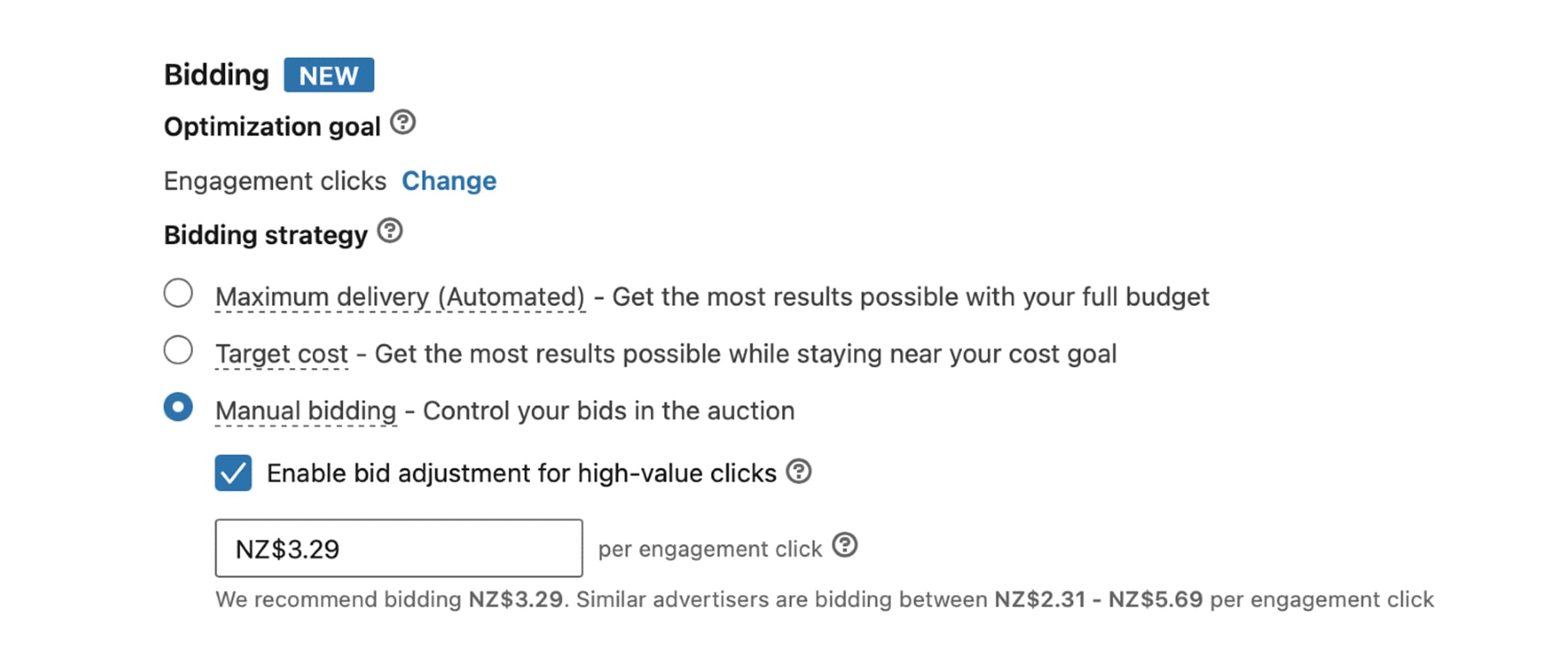Manual bidding on LinkedIn: Is it the best strategy?
You may have noticed a few changes within LinkedIn Campaign Manager recently. A new bidding strategy has been made available, and it’s one that grants you greater control over your campaigns than ever before. Welcome to manual bidding on LinkedIn.
Manual bidding brings some of the functionality of Google Ads to LinkedIn, which, if we’re honest, was a long overdue addition. But while increased choice is generally a good thing, is this bidding strategy one that you should actually use? More specifically, which is better: automated or manual?
Having already tested this feature extensively in-house, at Traction we feel as though we’ve come up with an answer. But before we get to that, we should first understand the inner workings of the LinkedIn bidding system.
How LinkedIn bidding works
LinkedIn bidding isn’t just a case of the highest bid winning (although that obviously helps.) Upon entering your ad in the bid auction, LinkedIn will consider the following factors:
- Budget: How much are you willing to spend? The higher your budget, the more likely you are to win the bid and reach your audience.
- Target Audience: What type of user are you aiming for? Filter using demographic information to ensure you exclusively reach those most willing to engage.
- Campaign Objective: What’s the overarching goal of the campaign – awareness, leads, website visits, sales?
- Ad quality: How likely is it that your target audience will engage with the ad? Ad content, including messaging and creative, is analysed to create a quality score.
- Historical performance: How well has the campaign performed previously?
While budget is the primary factor, LinkedIn also wants to ensure that its ads are engaging – that they add value to the platform, rather than turning it into a spam machine. LinkedIn weighs up all the above, then chooses a winner from a pool of bidders looking to get in front of a similar audience. Similar to eBay, the winner doesn’t pay the full price of their bid if they happen to be the highest – it instead reverts back to the price nominated by the second-placed bidder.

LinkedIn Automatic vs manual
How does automated bidding differ from manual? Let’s take a closer look at each.
Automated bidding
This option aims to convert your entire budget into the greatest number of impressions. You are unable to cap your bid, and you are charged per impression.
Manual bidding
AKA ‘maximum CPC’, this option allows you to set the bid yourself. LinkedIn will offer up recommendations, so you aren’t flying totally blind, and you are granted total control over your cost per result. You will need to play around with your bid to find that sweet spot, so this is obviously a more time-consuming option.
Which is best?
At Traction we have tested manual bidding on LinkedIn against automated across a wealth of scenarios, audiences and markets. And in almost every case, manual bidding outperformed automated.
Why? While it’s a second-price auction, the cost per click on LinkedIn tends to correlate more directly with the CPC bid than it does on other platforms, like Facebook and Google Ads. This means that you can manually set a limit with greater confidence than you can on other platforms to ensure you don’t overpay.
Automatic bidding on LinkedIn also charges you on an impression basis. If your campaign has a low CTR, say 1% or less, this can see you throwing your money down the drain, as you’re charged for ineffective impressions. Manual bidding allows you to maintain greater control over your CPC, limiting and cutting off campaigns if they turn out to be ineffective.
There are certainly times when automatic bidding is the best bet, like when you’ve got a highly targeted and highly effective campaign in which you want to stay at the front of your audience’s mind, or if you want to gain an understanding of the potential of a new campaign. Automated campaigns are great at helping you capture large slices of impression share for specific audiences.
But in almost every other case, the control offered by manual bidding on LinkedIn is more than worth the extra effort it demands.







